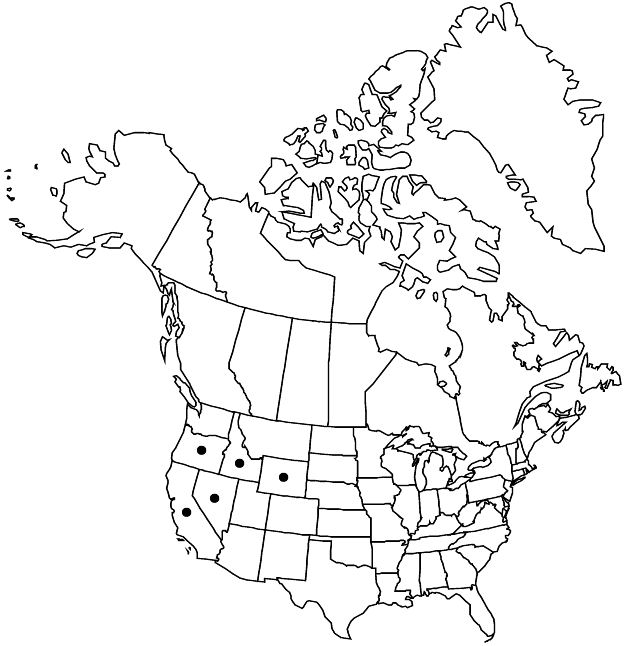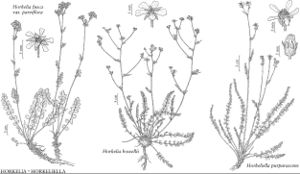Horkelia fusca var. parviflora
Itin. Princ. S. Coburgi 1: 17. 1883.
Stems 1–4.5 dm. Basal leaves green, 4–15(–18) cm; leaflets 4–8 per side, cuneate to broadly obovate, 5–15(–20) × (2–)5–10(–15) mm, 1/2 as wide to wider than long, divided 1/4–1/2 to midrib into 4–6(–10) teeth, surfaces not obscured, sparsely to moderately hirsute or villous, sometimes glabrate. Cauline leaves 1–3(or 4); leaflets of proximalmost 2–4(or 5) per side. Inflorescences green to purplish, congested to open, usually comprising less than 1/4 of stem, composed of 5–20-flowered glomerules, glandular hairs not red-septate; bracts acute-lobed, not obscuring pedicels and flowers at maturity. Flowers: epicalyx bractlets 1–2(–3) mm; hypanthium 1.5–2 × 2–3.5 mm; petals 2–4.5(–6.5) mm; filaments 0.2–1 mm, usually longer than wide, anthers 0.3–0.5 mm; styles 0.9–1.1 mm. Achenes 1–1.2 mm. 2n = 28.
Phenology: Flowering summer.
Habitat: Dry meadow edges, in conifer woodlands, mainly on volcanic or granitic soil
Elevation: 800–3300 m
Distribution

Calif., Idaho, Nev., Oreg., Wyo.
Discussion
Variety parviflora is the most widespread and polymorphic in the species and might represent the repository for variation that is not accommodated by the other, more tightly circumscribed varieties. Population clusters occur in three discrete areas: the Sierra Nevada of eastern California and adjacent Nevada, the mountains of northern California extending north in the Cascade Range to central Oregon, and the mountains of central Idaho. Each of these three areas has plants that differ slightly from those of the other two.
The most distinct phase is found in the Cascade Range of Oregon, with larger-than-average petals and highly branched inflorescences. Plants from Lost Prairie in eastern Linn County are particularly anomalous, with petals to 6.5 mm; further studies may indicate that these deserve separate recognition.
Plants from the Sierra Nevada tend to have smaller petals, and those in the higher southern Sierra Nevada tend to have capitate or subcapitate inflorescences. From about Lake Tahoe northward, inflorescences tend to be somewhat more open but still congested compared to the Oregon phase.
The Idaho phase, represented by the type of var. parviflora, has petals that run the full range from 2–4 mm, with most individuals having a slightly branched inflorescence. Unlike those of the other two phases, both the hypanthia and sepals are often purple; the hypanthium is otherwise typically greenish with only the sepals themselves a dark purple. The sole Wyoming record (D. R. Goddard 1027, F, UC) has yet to be confirmed by more recent collections in Yellowstone National Park. These plants have pale inflorescences, relatively blunt sepals, and short epicalyx bractlets, differing in these features from the closest populations in central Idaho. For reports from Montana, see species discussion.
Selected References
None.
